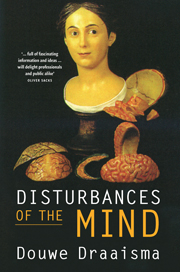Book contents
- Frontmatter
- Contents
- Introduction
- 1 Towards dusk the images appear
- 2 A tormenting round of tremors
- 3 Phineas Gage’s posthumous stroll
- 4 The Celestine prophesy
- 5 Sparks from a Leyden jar
- 6 Siberian brandy
- 7 Go to hell, idiot! Gilles de la Tourette syndrome
- 8 A labyrinth of tangles
- 9 The Mercator of neurology
- 10 The headquarters of madness
- 11 A cup of tea for the doppelgänger
- 12 Little professors
- 13 The Cardan suspension of science
- Index
- References
2 - A tormenting round of tremors
Parkinson’s disease
Published online by Cambridge University Press: 05 March 2014
- Frontmatter
- Contents
- Introduction
- 1 Towards dusk the images appear
- 2 A tormenting round of tremors
- 3 Phineas Gage’s posthumous stroll
- 4 The Celestine prophesy
- 5 Sparks from a Leyden jar
- 6 Siberian brandy
- 7 Go to hell, idiot! Gilles de la Tourette syndrome
- 8 A labyrinth of tangles
- 9 The Mercator of neurology
- 10 The headquarters of madness
- 11 A cup of tea for the doppelgänger
- 12 Little professors
- 13 The Cardan suspension of science
- Index
- References
Summary
On a Sunday afternoon shortly before Christmas 1824, James Parkinson suffered a stroke which paralysed him on the right side, and took away his power of speech. He was then in his seventieth year and, as a physician, he must have realized that his chances of recovery were not good. His son, John William, with whom he shared a practice in London (as Parkinson himself had done with his own father) nursed him with the utmost care, but there was little he could do. In a brief letter addressed to the Board of Trustees of the Poor of the Parish of St Leonard’s, he informed them that his father had died on the morning of 21 December. In the minutes, the council expressed its appreciation for the medical services he had rendered to the parishioners. The medical societies which Parkinson belonged to duly noted the date of his death in their records. There were no extensive In Memoriams. The fact that the life of James Parkinson had come to an end was noted, but not commemorated.
Everything that Parkinson had achieved in terms of fame and reputation throughout his long and active career seems to have disappeared at his passing. He was co-founder of several scientific societies devoted to the study of medicine and geology (the second passion in his life). He had written handbooks on chemistry and fossils which were reprinted several times; he published works on medical care within the home for a wide audience; he was a feared pamphleteer on social and political issues; and he left behind an extensive series of books and articles on such varied subjects as gout, dangerous sports, statutory regulations for insane asylums, and how to reanimate someone struck by lightning. After his death, the collection of fossils he had amassed, regarded as one of the finest in the country, was broken up at auction. Most of the objects went to a geological museum in the United States, where they were later lost in a fire.
- Type
- Chapter
- Information
- Disturbances of the Mind , pp. 40 - 64Publisher: Cambridge University PressPrint publication year: 2009



